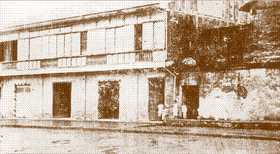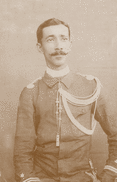History of Philippine Masonry

The Katipunan and Masonry
Liberalism reaches the Philippines In 1869 following the victory of the liberals in Spain, a Mason, Governor General Carlos Maria dela Torre was assigned to the Philippines. He immediately implemented the educational decrees of a fellow Mason, Minister of the Colonies Segismundo Moret; lifted strict press censorship; allowed free discussion of social and political issues, and instituted other reforms that endeared him to the Filipinos. But two of his acts though unrelated, later provided the fuel and the spark that ignited friar reprisals, which in turn accelerated the growth of Filipino activism. First was his open support of the call for the Filipinization of the clergy and secularization of parishes led by Filipino priest Father Jose Burgos. The second was his benevolent act of granting military personnel, exemption from the polo y servicio (forced labor) and paying of tributes. Dela Torre’s tenure was short. In November of 1870, after a brief interlude with a republican government, the Spanish Cortes (parliament) elected a constitutional monarchy. In 1871 Dela Torre was replaced by Governor General Rafael Izquierdo who reversed all his liberal policies and recalled his reforms. The Friars strike back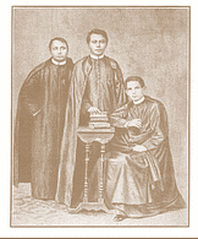 Gomez, Burgos, Zamora
In 1872, the Spanish friars in the Philippines saw an opportunity to silence Father Jose Burgos and suppress the growing nationalistic sentiments in the colony when on the 20th of January, military personnel in Cavite arsenal staged a bloody uprising in protest against the withdrawal of the privileges granted them earlier by Governor General dela Torre. The incident, known in history as Motin de Cavite (Cavite Mutiny) was exploited by the friars. They implicated Fathers Burgos, Gomez and Zamora, other known Filipino reformists and liberal thinkers. The three priests were publicly executed by garrote on February 17.
Lesser known in history books was the persecution of Filipino Masons belonging to different Lodges and jurisdictions in the country like Jacobo Zobel, Enrique Paraiso, Crisanto delos Santos and Maximo Inocencio. Delos Santos and Inocencio were members of a lodge in Cavite; Zobel, of a German Lodge in Manila, and Paraiso, of a lodge under the Grande Oriente de Espana in Pandacan. Zobel was imprisoned at Fort Santiago for several months. Paraiso, delos Santos and Inocencio were given ten year prison sentences and deported to Cartagena, Spain. As the friars became increasingly, a symbol of oppression and injustice, Filipino activism took form. Graciano Lopez Jaena and Marcelo del Pilar started writing satirical articles against them but they too, had to flee the country to escape persecution. In Madrid, Spain they found a liberal environment where opinions were respected and the Filipinos, generally regarded as equals. Soon they were joined by other expatriates and students, notably Jose Rizal. They found the conditions in Spain conducive to wage a propaganda campaign to expose the ills and excesses of the friars in the Philippines; seek colonial reforms and demand representation in the Spanish Parliament. They also found Latin Masonry as a champion of liberal ideas; advocate of equality, fraternity and liberty. In Miguel Morayta, professor at the Central University of Madrid and Grand Master of the Grande Oriente Español, they saw a true mentor and friend. Soon they were able to establish the first Filipino Lodges in Spain, Logia Revolución, followed by Logia Solidaridad. Then they sent Pedro Serrano Laktaw to Manila to organize Filipino Lodges. By 1892, Philippine Masonry was well underway. La Liga Filipina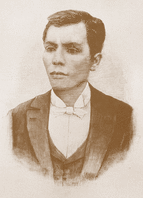 Andres Bonifacio
Dr Jose Rizal, author of the anti-friar novel Noli Me Tangere, arrived in 1892, and with the support of other Masonic leaders, established the Liga Filipina in Tondo on July 3, merely a week after his return. The Liga’s constitution aimed to unite the whole archipelago into one compact, vigorous, and homogenous body; mutual protection in every want and necessity; defense against all violence and injustice; encouragement of instruction, agriculture and commerce; and study and application of reforms. Rizal wanted to involve the people directly in the struggle for colonial reforms. However, the Spanish friars, ever wary of civic organizations among Filipinos and with deep hatred of Rizal, reacted by having him banished to Dapitan. The authorities had the houses of Masons in Manila and those visited by Rizal in the provinces of Bulacan, Tarlac and Pampanga raided and searched. Many leading Masons were arrested and deported. Lodges were put in a tight watch, forcing them to stop their labors. Without Rizal, the Liga Filipina could not continue.
This quieted activism for a while but did not dampen the growing nationalist sentiments. On April 3, 1893, Andres Bonifacio of Logia Taliba, Domingo Franco and Apolinario Mabini, both of Logia Balagtas, led the revival of the Liga Filipina. Franco was elected president while Deodato Arellano (Logia Lusong), secretary-treasurer. The reorganized Liga was governed by a Supreme Council, under which popular councils were established in the different districts of Manila– all headed by Masons from Lusong, Nilad, Balagtas and Taliba Lodges. Bonifacio proved to be a good organizer and was able to recruit many members. Bonifacio however, had become a hardliner. He and other Logia Taliba members saw Rizal’s deportation as a sign that reforms were no longer attainable. Before the revival of the Liga, they had conceptualized a new secret society called the Katipunan to advocate separation from Spain. Six months after the Liga’s revival two factions emerged: one that wanted to continue the society’s aim of peaceful reforms, and another which advocated the overthrow of the colonial government. In October, the Liga was dissolved. Mabini and other moderates formed the Cuerpo de Compromisarios and tried to continue sending funds to finance the Propaganda Movement in Spain. However, their funds soon dried up as donors became increasingly disillusioned over the apathy of the central government in Madrid. The hardliners who were convinced that separation from Spain was the only alternative, rallied behind the radical Katipunan of Bonifacio, Arellano, Plata and other Logia Taliba members. The Katipunan assumes a new form It was on July 6, 1892, barely three days after forming the Liga Filipina, when Jose Rizal was arrested. In the evening of July 7, the Katipunan was founded. Six Masons: Ladislao Diwa, Andres Bonifacio, Teodoro Plata, Valentin Diaz, Jose Dizon, all from Logia Taliba, and Deodato Arellano of Logia Lusong organized the first two triangulos (triangles); patterned after the patriotic Black Capes of Italy. The triangle system (tungko) was designed to guarantee that only two members would be known to any member at any time. The triangulo became a cell called “Hasik” (to sow; scatter) whose job was to recruit members from their areas. When enough members were gathered, a Balangay (chapter) was formed and then, a district council called Sangguinang Hukuman.(Cruz, 1922).
Later, the Katipunan gravitated towards the form and system of Spanish Grand Orient Masonry and became quasi-Masonic in its reception and initiation of members. In his memoirs serialized in the weekly Sampagita from July 24, 1927 to April 15, 1928, Santiago Alvarez who accompanied Emilio Aguinaldo (Logia Pilar, Imus, Cavite) to Bonifacio, took notice of Aguinaldo’s prolonged initiation and attributed it to the Katipunan’s similarities to Masonry. Alvarez witnessed Aguinaldo’s initiation rites on March 14, 1896 and observed that Aguinaldo answered the interrogation in the “Masonic” way. Hermenegildo Cruz, former Deputy Director of the then Bureau of Labor, wrote that the Katipunan was “Huwad sa Masoneria,” (modeled from Masonry), in his 1922 pamphlet titled “Kartilyang Makabayan”. “Huwad sa Masonerya”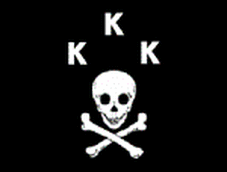
The Katipunan borrowed from Grand Orient Symbolic Masonry, the system of an initiate’s progression into three degrees, the use of passwords, signs of recognition, certain symbols and officers’ jewels. Instead of aprons, black, green and red colored hoods were substituted to distinguish the three degrees. And instead of the Masonic degrees, Aprendiz, Compañero and Maestro, the degrees were called Katipon, Kawal and Bayani. The passwords were Anak (ng Bayan,) GomBurZa and Rizal. From Masonry was also borrowed, the method of interrogation and admission of a candidate and the oath of secrecy and loyalty. But the Katipunan added to the ceremonies the Pacto de Sangre (blood pact) which was not Masonic but believed to be copied from the Carbonari of Italy, wherein each member made an incision on his arm to draw blood by which his signature was signed.
The candidate was first led blindfolded into a darkened room that served like the Masonic chamber of reflection. Then the blindfold was removed. On a wall was written the admonition that only the strong and courageous could continue; that one motivated only by curiosity should withdraw, and that the door of the Katipunan would remain closed to anyone who could not overcome his bad habits. On a table covered with black cloth, were a human skull and crossbones, along with a long bladed weapon, a revolver, a small knife with sharp edge, a pen, a copy of the Kartilya ng Katipunan, and a sheet of paper where three questions were written. The three questions were about the condition of the country before, the present and the future. In Spanish Orient Masonry the candidate was led by a brother called the Terrible; in the Katipunan the initiate was led by a Katipunero called Mabalasik, Tagalog translation of the Spanish word Terrible. To protect their identities, Katipuneros like Masons, used symbolic names. Andres Bonifacio was “Sinukuan” in Masonry and “Maypagasa” in the Katipunan. Masons Persecuted Again The respite enjoyed by Masons after the deportation of Rizal and the arrest of many brethren did not last long. Within this period however, apart from the revival (and later split) of the Liga Filipina, Filipino Masons were able to work for the establishment of the Gran Consejo Regional de Filipinas under the Grande Oriente Español. Grand Master Ambrosio Flores and his officers were installed on December 10, 1893.
But by early 1894, Masonic labors were under more tenuous conditions, not only in Manila but also in the provinces. Government authorities had so heightened surveillance of Masonic activities that lodge meetings were held without fixed schedules and in different places from time to time, often disguised as social gatherings. Arrests and deportations increased in 1895, forcing many lodges to suspend their activities. But, far from serving to demoralize the Masons, the harsh measures only made many of them channel their patriotic spirit to the Katipunan. According to Cruz (1922): “. . .Nang taong 1895 ay muli na naman silang pinagusig. Ang kilusan sa paghihimagsik n~g "Katipunan" na noo'y lumaganap na sa m~ga taong bayan, lalonglaluna sa m~ga lalawigang tagalog, ay sa m~ga mason naman ipinagbintang. Sila na naman ang hinuli, pinahirapan at ipinagbibilanggo. Ang m~ga "convento" ay nagsikilos, ang m~ga pinunong kastila ay paraparang nagsusumikap sa pagbibintang na ang m~ga "logia," ay walang linalayon kundi ang paghiwalay n~g Pilipinas sa España. Ang bun~ga n~g lahat n~g ito ay ang pagsisiyasat sa m~ga bahay bahay n~g m~ga mason, ang pagpapabilanggo, pagpapatapon sa malalayong bayan sa m~ga magiting na kampon n~g "Masonería." Dahil dito, marami rin sa m~ga mason na noong una'y di kasangayon ni Bonifacio sa paghihimagsik, ang tumulong na tuloy sa pagpapalaganap n~g "Katipunan." (In 1895, persecution intensified again. When the Katipunan movement spread specially in the Tagalog provinces, Masons were again blamed. Both the church and the government authorities accused Masonic Lodges of advocating separation from Spain. Masons’ houses were searched, members were arrested, tortured, imprisoned or deported to distant places. Under these conditions, even Masons who at the start, disagreed with Bonifacio’s plan to revolt joined in the propagation of the Katipunan.) The Katipunan exposed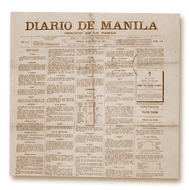
By 1896, the growing membership and recruitment activities of the Katipunan had made it vulnerable to detection. Even before the raid of the printing press of Diario de Manila where Katipunan paraphernalia and a list of membership were discovered, the government already had reports on the society’s existence. Although the friars never admitted it, the confessional had been a source of information, prompting the Katipunan leaders to prohibit its womenfolk from going to confessions.
There was also this guardia civil officer, Lt. Manuel Sityar, Jr (hijo), who was among the first to report to the Governor General, the existence of the yet unknown organization which was actively recruiting men in Mandaluyong and San Juan and signing their oaths in blood. (Sityar, whose mother was a Filipina later joined the revolutionary forces, and served as delegate to the Malolos Congress.) Santiago Alvarez recalled in his memoirs that he and Emilio Aguinaldo attended a general meeting called by Supremo Bonifacio on May 3, 1896, at the house of Valentin Cruz behind the Pasig Catholic Church. The Supremo apprised the members of the precarious situation of the Katipunan because three katipunero wives, two from Tondo, and one from Santa Ana made confessions to their priests. The authorities already knew of the existence of the secret society and had tightened their surveillance. Fearing that reprisals were forthcoming, Bonifacio wanted to take action but wisely asked the other leaders, if it was time to revolt. Magdalo delegates Emilio Aguinaldo and Benigno Santi expressed their views regarding their poor state of preparedness in terms of manpower, planning, firearms and war equipment. Santiago Alvarez of the Magdiwang council added that Dr Jose Rizal was still in exile in Dapitan and warned of the consequences of a failed revolt. The meeting lasted till five o’clock the following morning. By majority opinion, it was decided to consult Jose Rizal in Dapitan, before a final decision was to be made. Dr Pio Valenzuela was designated as emissary who was to travel to Dapitan under the pretext of having a blind patient treated by Dr Rizal. Before the end of May 1896, Dr Pio Valenzuela, with eye patient Raymundo Mata, went to Dapitan to seek an audience with the exiled Dr Jose Rizal. The meeting between Valenzuela and Rizal was held privately and not even Mata heard what transpired. The report of Valenzuela to the Supremo was not openly discussed, according to Alvarez, leaving the Katipuneros to conclude that Rizal did not approve of the revolt. Madrid decrees the eradication of Masonry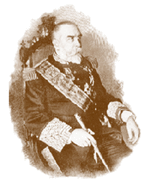 Ramon Blanco
On July 2, 1896, the central government in Madrid issued a decree condemning Masonry as a secret organization and ordering stricter measures against Masons. According to Teodoro M. Kalaw, (La Masoneria Filipina, 1920), after the discovery of the Katipunan, the Madrid government suspended the Circulo Filipino (which replaced the Asociación Hispano-Filipina) and arrested its Board of Directors. Heads of Spanish Orients in Spain were also arrested, for it was Spanish Masonry that had implanted Masonry in the Philippines, and therefore, shared in the responsibility for the insurrection.
But it was ironic for both the friars and the Filipino Masons that when the 1896 anti-Masonry decree was promulgated, the Spanish Governor General of the Philippines was the 33° Mason, Ramon Blanco. It was under his administration when many Masons were arrested at the outbreak of the revolution, including the 13 martyrs of Cavite. But Blanco also tried to extend amnesty to the rebels. He approved the travel of the exiled Rizal to Cuba as a volunteer doctor for the Spanish army; but Rizal was implicated in the revolution and arrested before reaching Spain. Blanco reportedly made it known that he would not sign any execution order should Rizal, a known Mason, be found guilty. Blanco was portrayed by the firars as ambivalent, too conciliatory, and ineffectual in dealing with the uprising. His offensives to retake Cavite was also a failure. The friars conspired to have him removed and by December 1896, Madrid had replaced him with Governor General Camilo Polavieja. It was Polavieja who ordered the trial and execution of Jose Rizal. More reprisals ensued. The Revolution While the unmasking of the Katipunan might have given a face to the 1896 revolution, it did not provide a reason for the Spanish authorities to finally recognize what was Masonic and what was revolutionary. To them the root of all the problems was Masonry and the Katipunan was modeled after it. (“Huwad sa Masonerya” )
Jesuit Francisco Foradada, in his book, La Soberanía de España en Filipinas, Opúsculo de Actualidad, Barcelona, 1897, wrote that Filipino filibusterism (subversion) was not the son of righteousness, morality or justice; but of Masonry, enemy of God and all that was virtuous, just, and sacred: “Así resulta claro que el filibusterismo Filipino no es hijo del derecho, de la moral ni de la justicia, sino de la Masonería, enemiga de Dios y de todo lo bueno, justo y santo.” Many Masons were persecuted before and during the revolution. Some were imprisoned or exiled because they were vocal in their quest for justice and reforms; some died in the battlefields. Tragically, there were those who suffered and died simply because they were Masons. Whether a reformist or a revolutionist, persecution spared no one; but under the flag of nationalism, it did not really matter whether one was a Mason or a Katipunero. In the final push for liberty and justice there stood only the spirit, courage, honor and pride of the Filipino. |
Cavite Mutiny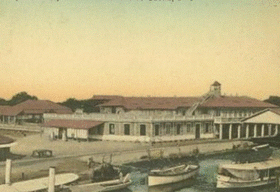 Cavite Arsenal
The Cavite Mutiny was the offshoot of Governor General Izquierdo's recall of the privileges granted by his predecessor to the military. Led by a Sergeant Ferdinand La Madrid, the mutineers were able to seize Fort San Felipe but La Madrid and other leaders were killed when two infantry regiments were sent the following morning and retook the fort.
Some of the persons implicated in the Cavite Mutiny re-emerged in the 1896 revolution like Maximo Inocencio, Severino Lapidario, Mariano Alvarez, Juan Castaneda and Julian Felipe. Inocencio,Lapidario and Castaneda were Masons. Inocencio was exiled in Cartagena for ten years. He rebuilt his business in contracting, ship building, logging and trading upon his return and was again arrested at the start of the 1896 revolution. He was one of the 13 martyrs of Cavite. Severino Lapidario was with the Spanish marine infantry and was later rehabilitated to become provincial jail warden. He was arrested together with Inocencio at the start of the revolution and likewise executed. Another Mason Juan Castaneda, one of the founders of Logia Pilar, survived after his arrest and imprisonment and became a general in Aguinaldo's army during the revolution. It is uncertain whether Mariano Alvarez and Julian Felipe ever became Masons. Alvarez was arrested when the authorities saw a picture of Father Jose Burgos in his possession and was also incarcerated. He survived and became the leader of the Magdiwang Council of the Katipunan in 1896. Julian Felipe was imprisoned for nine months but also survived and later joined the revolution. He composed the Marcha Nacional Filipina, which was played during the declaration of independence and became our national anthem. _____________________________________
|
